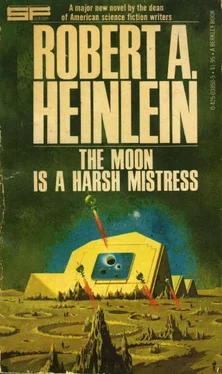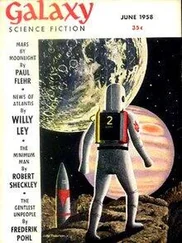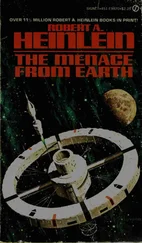Robert Heinlein - The Moon Is a Harsh Mistress
Здесь есть возможность читать онлайн «Robert Heinlein - The Moon Is a Harsh Mistress» весь текст электронной книги совершенно бесплатно (целиком полную версию без сокращений). В некоторых случаях можно слушать аудио, скачать через торрент в формате fb2 и присутствует краткое содержание. Жанр: Фантастика и фэнтези, на английском языке. Описание произведения, (предисловие) а так же отзывы посетителей доступны на портале библиотеки ЛибКат.
- Название:The Moon Is a Harsh Mistress
- Автор:
- Жанр:
- Год:неизвестен
- ISBN:нет данных
- Рейтинг книги:5 / 5. Голосов: 1
-
Избранное:Добавить в избранное
- Отзывы:
-
Ваша оценка:
- 100
- 1
- 2
- 3
- 4
- 5
The Moon Is a Harsh Mistress: краткое содержание, описание и аннотация
Предлагаем к чтению аннотацию, описание, краткое содержание или предисловие (зависит от того, что написал сам автор книги «The Moon Is a Harsh Mistress»). Если вы не нашли необходимую информацию о книге — напишите в комментариях, мы постараемся отыскать её.
The Moon Is a Harsh Mistress — читать онлайн бесплатно полную книгу (весь текст) целиком
Ниже представлен текст книги, разбитый по страницам. Система сохранения места последней прочитанной страницы, позволяет с удобством читать онлайн бесплатно книгу «The Moon Is a Harsh Mistress», без необходимости каждый раз заново искать на чём Вы остановились. Поставьте закладку, и сможете в любой момент перейти на страницу, на которой закончили чтение.
Интервал:
Закладка:
"Oh. I thought that you were overestimating the capacity of present-day engineering. We drill deeply today. Not that deeply. Go on."
"Doctor, it may be that common misconception which caused you to check me is why such a catapult has not been constructed before this. I've seen those earlier studies. Most assumed that a catapult would be vertical, or that it would have to tilt up at the end to toss the spacecraft into the sky--and neither is feasible nor necessary. I suppose the asswnption arose from the fact that your spaceships do boost straight up, or nearly."
I went on: "But they do that to get above atmosphere, not to get into orbit. Escape speed is not a vector quantity; it is scalar. A load bursting from a catapult at escape speed will not return to Earth no matter what its direction. Uh... two corrections: it must not be headed toward the Earth itself but at some part of the sky hemisphere, and it must have enough added velocity to punch through whatever atmosphere it still traverses. If it is headed in the right direction it will wind up at Luna."
"Ah, yes. Then this catapult could be used but once each lunar month?"
"No, sir. On the basis on which you were thinking it would be once every day, picking the time to fit where Luna will be in her orbit. But in fact--or so the computer says; I'm not an astronautics expert--in fact this catapult could be used almost any time, simply by varying ejection speed, and the orbits could still wind up at Luna."
"I don't visualize that."
"Neither do I, Doctor, but-- Excuse me but isn't there an exceptionally fine computer at Peiping University?"
"And if there is?" (Did I detect an increase in bland inscrutability? A Cyborg-computer-- Pickled brains? Or live ones, aware? Horrible, either way.)
"Why not ask a topnotch computer for all possible ejection times for such a catapult as I have described? Some orbits go far outside Luna's orbit before returning to where they can be captured by Luna, taking a fantastically long time. Others hook around Terra and then go quite directly. Some are as simple as the ones we use from Luna. There are periods each day when short orbits may be selected. But a load is in the catapult less than one minute; the limitation is how fast the beds can be made ready. It is even possible to have more than one load going up the catapult at a time if the power is sufficient and computer control is versatile. The only thing that worries me is-- These high mountains they are covered with snow?"
"Usually," he answered. "Ice and snow and bare rock."
"Well, sir, being born in Luna I don t know anything about snow. The stator would not only have to be rigid under the heavy gravity of this planet but would have to withstand dynamic thrusts at twenty gravities. I don t suppose it could be anchored to ice or snow. Or could it be?"
"I'm not an engineer, Colonel, but it seems unlikely. Snow and ice would have to be removed. And kept clear. Weather would be a problem, too."
"Weather I know nothing about, Doctor, and all I know about ice is that it has a heat of crystallization of three hundred thirty-five million joules per tonne. I have no idea how many tonnes would have to be melted to clear the site, or how much energy would be required to keep it clear, but it seems to me that it might take as large a reactor to keep it free of ice as to power the catapult."
"We can build reactors, we can melt ice. Or engineers can be sent north for re-education until they do understand ice." Dr. Chan smiled and I shivered. "However, the engineering of ice and snow was solved in Antarctica years ago; don't worry about it. A clear, solid-rock site about three hundred fifty kilometers long at a high altitude-- Anything else I should know?"
"Not much, sir. Melted ice could be collected near the catapult head and thus be the most massy part of what will be shipped to Luna--quite a saving. Also the steel canisters would be re-used to ship grain to Earth, thus stopping another drain that Luna can't take. No reason why a canister should not make the trip hundreds of times. At Luna it would be much the way barges are now landed off Bombay, solid-charge retrorockets programmed by ground control--except that it would be much cheaper, two and a half kilometer-seconds change of motion versus eleven-plus, a squared factor of about twenty--but actually even more favorable, as retros are parasitic weight and the payload improves accordingly. There is even a way to improve that."
"How?"
"Doctor, this is outside my specialty. But everybody knows that your best ships use hydrogen as reaction mass heated by a fusion reactor. But hydrogen is expensive in Luna and any mass could be reaction mass; it just would not be as efficient. Can you visualize an enormous, brute-force space tug designed to fit Lunar conditions? It would use raw rock, vaporized, as reaction mass and would be designed to go up into parking orbit, pick up those shipments from Terra, bring them down to Luna's surface. It would be ugly, all the fancies stripped away--might not be manned even by a Cyborg. It can be piloted from the ground, by computer."
"Yes, I suppose such a ship could be designed. But let's not complicate things. Have you covered the essentials about this catapult?"
"I believe so, Doctor. The site is the crucial thing. Take that peak Nanda Devi. By the maps I have seen it appears to have a long, very high ridge sloping to the west for about the length of our catapult. If that is true, it would be ideal--less to cut away, less to bridge. I don't mean that it is the ideal site but that is the sort to look for: a very high peak with a long, long ridge west of it."
"I understand." Dr. Chan left abruptly.
Next few weeks I repeated that in a dozen countries, always in private and with implication that it was secret. All that changed was name of mountain. In Ecuador I pointed out that Chimborazo was almost on equator--ideal! But in Argentina I emphasized that their Aconcagua was highest peak in Western Hemisphere. In Bolivia I noted that Altoplano was as high as Tibetan Plateau (almost true), much nearer equator, and offered a wide choice of sites for easy construction leading up to peaks comparable to any on Terra.
I talked to a North American who was a political opponent of that choom who had called us "rabble." I pointed out that, while Mount McKinley was comparable to anything in Asia or South America, there was much to be said for Mauna Loa--extreme ease of construction. Doubling gees to make it short enough to fit, and Hawaii would be Spaceport of World... whole world, for we talked about day when Mars would be exploited and freight for three (possibly four) planets would channel through their "Big Island."
Never mentioned Mauna Loa's volcanic nature; instead I noted that location permitted an aborted load to splash harmlessly in Pacific Ocean.
In Sovunion was only one peak discussed--Lenin, over thousand meters (and rather too close to their big neighbor).
Kilimanjaro, Popocatepetl, Logan, El Libertado--my favorite peak changed by country; all that we required was that it be "highest mountain" in hearts of locals. I found something to say about modest mountains of Chad when we were entertained there and rationalized so well I almost believed it.
Other times, with help of leading questions from Stu LaJoie's stooges, I talked about chemical engineering (of which I know nothing but had memorized facts) on surface of Luna, where endless free vacuum and sunpower and limitless raw materials and predictable conditions permitted ways of processing expensive or impossible Earthside--when day arrived that cheap shipping both ways made it profitable to exploit Luna's virgin resources, Was always a suggestion that entrenched bureaucracy of Lunar Authority had failed to see great potential of Luna (true), plus answer to a question always asked, which answer asserted that Luna could accept any number of colonists.
Читать дальшеИнтервал:
Закладка:
Похожие книги на «The Moon Is a Harsh Mistress»
Представляем Вашему вниманию похожие книги на «The Moon Is a Harsh Mistress» списком для выбора. Мы отобрали схожую по названию и смыслу литературу в надежде предоставить читателям больше вариантов отыскать новые, интересные, ещё непрочитанные произведения.
Обсуждение, отзывы о книге «The Moon Is a Harsh Mistress» и просто собственные мнения читателей. Оставьте ваши комментарии, напишите, что Вы думаете о произведении, его смысле или главных героях. Укажите что конкретно понравилось, а что нет, и почему Вы так считаете.








